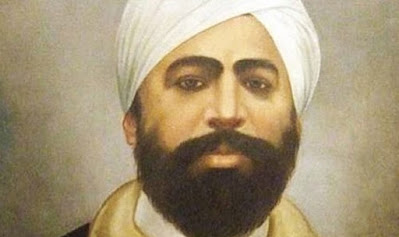 |
| Shaheed Udham singh |
Biography of Mr William Shakespeare Missile Man of India Dr APJ Abdul Kalam Narendra Damodasdas Modi Shaheed Bhagat Singh Kalpana Chawla Neta Ji Subhash Chandra Bose
Shaheed Udham singh biography - biography of udham singh
Bipin chandra Pal Biography - Biography of Bipin Chandra Pal
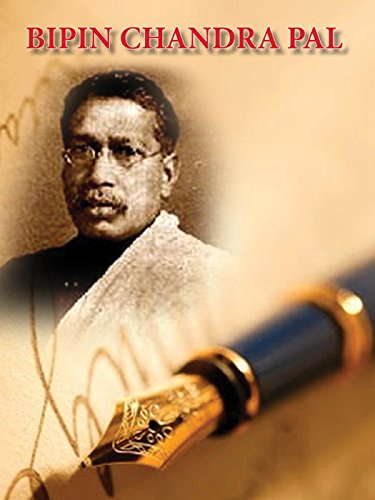 |
| Bipin chandra Pal |
Name: Bipin chandra Ram Chandra Pal.
Born: 7 November 1858.
Father: Ramachandra.
Mother: Narayanidevi.
Marriage: Remarriage with widow after death of first wife.
Initial life:
Political life:
Idea
Writing:
Death:
Biography of Bal Gangadhar Tilak | Bal Gangadhar Tilak Biography
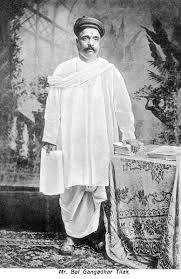 |
| Bal Gangadhar Tilak |
Biography of Bal Gangadhar Tilak | Bal Gangadhar Tilak Biography
| Real Name Bal Gangadhar Tilak |
| Born 23 July 1856 |
| Birthplace Chikhalgaon, Ratnagiri, Maharashtra |
| Father gangadharpant |
| Mata Parvatibai |
| Wife satyabhamabai |
| Son Sridhar Balwant, Vishwanath Balwant, Rambhau Balwant |
| Education B.A., LL.B. |
| Business freedom fighter, politician |
| Citizenship indian |
Why is Bal Gangadhar Tilak significant?
Bal Gangadhar Tilak Early Life:
Bal Gangadhar Tilak was born on 23 July 1856 in a Chitpavan Brahmin clan in Ratnagiri, Maharashtra. His father Gangadhar Ramchandra Tilak was a Sanskrit scholar and an eminent teacher. Tilak was a talented student and had a special love for mathematics. Since childhood, he was a strong opponent of injustice and used to say his words clearly without hesitation. Tilak was also one of the first generation Indian youth to receive modern education.
What were Bal Gangadhar Tilak's beliefs?
Bal Gangadhar Tilak Education:
His early education took place at the Anglo-Vernacular School in Pune, where he received education from some of the well-known teachers of the time. He enrolled in Deccan College. In 1877, Bal Gangadhar Tilak passed the BA examination with first class in mathematics. He went ahead and received his LLB degree while continuing his studies.
Bal Gangadhar Tilak Marriage:
He was married to 10-year-old Satyabhama. They had three children named Sridhar Balwant Tilak, Vishwanath Balwant Tilak, Rambhau Balwant Tilak. Bal Gangadhar Tilak Biography
Bal Gangadhar Tilak Journalism Career:
Tilak became a mathematics teacher at a private school in Pune. Shortly thereafter, he left school and became a journalist. At this time Bal Gangadhar ji was very much disturbed by the activities going on in the country, he wanted to raise his voice for this in a big way. Tilak was a great critic of western education system.
How was Bal Gangadhar Tilak educated?
Establishment of Kesari (Lokmnaya Tilak):
He along with his friend formed the Deccan Education Society to improve education in India. The following year, Tilak also started producing two newspapers. There was one, 'Kesari' which was a weekly newspaper in Marathi, the other was 'Mahratta' it was a weekly English newspaper. In a short span of time, both these newspapers became very famous.
In his newspaper Tilak used to write more on the plight of India. He used to print photographs of people's sufferings and real events. Gangadhar Ji used to say that come forward and fight for your rights. Bal Gangadhar Tilak used furious language to incite the Indians.
Lokmanya Tilak begins celebrating Ganpati Festival:
Bal Gangadhar Tilak was the Maharashtrian leader who voiced against the British during the British rule, fully embodied in Indian culture and traditions. They wanted to develop the country along with religious and social development. He started the Ganapati festival in 1893 to bind Hindus in the country in one thread.
Bal Gangadhar Tilak Political Career:
Bal Gangadhar joined the Bharatiya National Congress in 1890 to raise his voice against the British. The British knew Gangadhar as the first Indian politician of Mahatma Gandhi. He was a member of the Pune Municipal Council and the Bombay Legislature. Tilak was a great social reformer. He opposed child marriage and supported widow remarriage.
How did Bal Gangadhar Tilak become important?
Swadeshi Movement (Lokmanya Tilak Swadeshi Movement):
After coming out of jail, Tilak started the Swadeshi movement. Through newspapers and speeches, he used to convey his talk to every village of Maharashtra. Tilak also built a large indigenous market in front of his house. Through the Swadeshi movement, they boycotted all foreign goods, and asked people to join it.
At this time, differences within the Congress Party had increased, due to differences of opinion, they were divided into two parts, Moderates and Extremists. The hot hair was run by Gangadhar Tilak, while the moderate was run by Gopal Krishna. Both were opposed to each other but the aim was one, independence of India. Bal Gangadhar Tilak began to support Bipin Chandra Pal of Bengal and Lala Lajpat Rai of Punjab, hence the trio of these three became known as 'Lala-Bal-Pal'.
In 1909, Tilak in his paper Kesari immediately spoke of Swaraj, after which he was accused of treason. He was then jailed for 6 years, and was sent to Burma. Here in prison, he used to read many books, as well as he wrote the book 'The Secret of Geeta'. Tilak came out of jail on 8 June 1916.
After coming from jail, Tilak joined the 1916 Congress Party. They kept trying to reunite the two Congress parties. For this he also tried to convince Mahatma Gandhi not to fully support non-violence, but also to think about Swaraj. He formed his own party 'Home Rule League'. After this, Tilak traveled all over the country and tried to add Swaraj movement to everyone.
Bal Gangadhar Tilak Creations:
| Orion in 1893 |
| The Arctic Home in the Veda in 1903 |
| Geeta Mystery in 1915 |
Bal Gangadhar Tilak Death:
Lokmanya Bal Gangadhar Tilak organized more than 100 meetings to clarify the objectives of the league. In 1919, he criticized the Jallianwala Bagh murder case through his writings and appealed to continue the boycott movement. By 1920, they had become very weak. On August 1, 1920, this great priest of freedom took his last leave from this world. Paying tribute to him, Mahatma Gandhi named him the creator of modern India and Sardar Patel the father of the Indian revolution.
Lala Lajpat Rai Biography Death
 |
Lala Lajpat Rai Biography Death |
Lala Lajpat Rai Biography In English
| When Was Lala Lajpat Rai Born Or Died ? | |||
| BORN: 28 January 1865 | |||
| When Lala Lajpat Rai Died 17 November 1928 | |||
Achievements: Establishment of Indian Home League Society in America, President of Congress in 1920
What is the history of Lala Lajpat Rai?
EARLY LIFE
Lala Lajpat Rai was born on 28 January 1865 in Dudhekhe village which is presently located in Moga district of Punjab. He was the eldest son of Munshi Radha Kishan Azad and Gulab Devi. His father was a Baniya caste Aggarwal. His mother had taught him high moral values since childhood.
Lala Lajpat Rai enrolled in a government school in Lahore in 1889 for studies in law. During college he came in contact with patriots and future freedom fighters like Lala Hansraj and Pandit Gurudutt. The trio became good friends and joined the Arya Samaj founded by Swami Dayanand Saraswati.
Political life
In the year 1885, he passed the second class advocacy examination from a government college and started his advocacy in Hisar. Apart from advocacy, Lalaji collected funds for Dayanand College, participated in Arya Samaj functions and Congress activities. He was elected a member and secretary of the Municipality of Hisar. He moved to Lahore in 1892.
What are the qualities of Lala Lajpat Rai?
Lala Lajpat Rai was one of the three prominent Hindu nationalist leaders of the Indian National Congress. He was part of the Lal-Bal-Pal trio. Bal Gangadhar Tilak and Bipin Chandra Pal were the other two members of this trio. He formed the Garam Dal in the Indian National Congress to oppose the soft party (earlier headed by Gopal Krishna Gokhale). Lalaji participated in the movement against the partition of Bengal. He, along with Surendra Nath Banerjee, Bipin Chandra Pal and Arvind Ghosh, united the people in Bengal and other parts of the country for a vigorous campaign for Swadeshi. Lala Lajpat Rai was arrested on 3 May 1907 for causing unrest in Rawalpindi and was released on 11 November 1907 after spending six months in Mandalay jail.
Who is known as Punjab Kesari of Punjab? Lala Lajpat Rai
The freedom struggle had taken a revolutionary turn, so Lalaji wanted the real situation of India to be propagated in other countries as well. For this purpose he went to Britain in 1914. At the same time World War I broke out due to which he could not return to India and then went to the United States to get support for India. He founded the Indian Home League of America and wrote a book called "Young India". Through the book, he made serious allegations about British rule in India and hence it was banned before being published in Britain and India. He returned to India only after the end of the World War in 1920.
After returning, Lala Lajpat Rai led protests and non-cooperation movement in Punjab against the Jallianwala Bagh massacre. During this time, he was also arrested many times. He did not agree with Gandhiji's decision to stop the Non-Cooperation Movement due to the Chauri Chaura incident and he founded the Congress Independence Party.
How Lala Lajpat Rai Died?
In 1928, the British government decided to send the Simon Commission to India to discuss constitutional reforms. There was disappointment and anger among all the people as there was no Indian member in the commission. When the commission came to India in 1929, it was opposed all over India. Lala Lajpat Rai himself led a procession against the Simon Commission. Though the procession was taken out peacefully, the British government ruthlessly got the procession charged with sticks. Lala Lajpat Rai suffered severe head injuries and due to which he died on 17 November 1928.
Chandrashekhar Azad Biography
 |
| Chandrashekhar Azad Biography |
Chandrashekhar Azad Biography
Born: 23 July 1906
Died: 27 February 1931
What is the story of Chandrashekhar Azad?
Chandrashekhar Azad was a great Indian revolutionary. His fierce patriotism and courage inspired the people of his generation to participate in the freedom struggle. Chandrashekhar Azad was an advisor to Bhagat Singh, and a great freedom fighter and along with Bhagat Singh is considered one of the greatest revolutionaries of India.
When and where Chandrashekhar died?
EARLY LIFE (Chandrashekhar Azad Biography)
Was Chandrashekhar Azad married?
Chandrashekhar Azad was born on 23 July 1906 in Badar village of Unnao district, Uttar Pradesh. His father was Pandit Sitaram Tiwari and mother Jagrani. Pandit Sitaram Tiwari was then serving in the princely state of Alirajpur (currently located in Madhya Pradesh) and Chandrashekhar Azad spent his childhood in Bhavra village. Due to the insistence of his mother Jagrani Devi, Chandrashekhar Azad had to go to Banaras to study Sanskrit in Kashi Vidyapeeth.
Who killed Azad?
Revolutionary life (Chandrashekhar Azad Biography)
Chandrashekhar Azad was deeply hurt and disturbed by the Jallianwala Bagh massacre in Amritsar in 1919. In 1921, when Mahatma Gandhi started the Non-Cooperation Movement, Chandrasekhar Azad actively participated in this revolutionary activity. He received his first sentence at the age of fifteen. Chandrashekhar Azad was caught for participating in revolutionary activities. When the magistrate asked him his name, he called his name Azad. Chandrasekhar Azad was sentenced to fifteen lashes. Every whip of the whip, young Chandrasekhar shouted "Bharat Mata ki Jai". Since then Chandrashekhar received the title of Azad and became known as Azad. Chandrasekhar Azad, who was working in the freedom movement, vowed that he would never be arrested by the British government and would die the death of independence.
Who betrayed Chandrashekhar Azad?
After the non-cooperation movement was postponed, Chandrasekhar Azad was attracted to more aggressive and revolutionary ideals. He committed himself to liberate the country at any cost. Chandrasekhar Azad, along with his allies, targeted British officers who were known for their repressive policies against ordinary people and freedom fighters. Chandrashekhar Azad was involved in incidents such as the Kakori train robbery (1926), the Viceroy's attempt to blow up the train (1926), and shot Saunders to avenge Lala Lajpat Rai's death in Lahore (1928).
What is the full name of Azad?
Chandrashekhar Azad, together with Bhagat Singh and other patriots like Sukhdev and Rajguru, formed the 'Hindustan Samajwadi Prajatantra Sabha'. Its aim was to apply socialist principles to India's future progress along with India's independence.
Who gave slogan?
How did Chandrashekhar Died? (Chandrashekhar Azad Biography)
Chandrasekhar Azad became a terror for the British police due to his revolutionary activities. He was on their hit list and the British government somehow wanted to catch him alive or dead. On 27 February 1931, Chandrasekhar Azad went to meet his two colleagues at Alfred Park in Allahabad. One of his informants betrayed him and informed the British police. The police surrounded the park all around and ordered Chandrasekhar Azad to surrender. Chandrasekhar Azad single-handedly killed three policemen while fighting bravely. But when he found himself surrounded and there seemed no way to escape, this heroic son of Mother India shot himself. Thus he kept his vow to never be caught alive. His name is among the big revolutionaries of the country and his supreme sacrifice will always inspire the youth of the country.Nek Chand Biography In Hindi
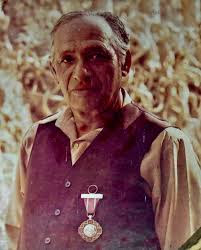 |
| Nek Chand Biography In Hindi |
Nek Chand Biography In Hindi
When Did Nek Chand Died?
Nek Chand, पूर्ण Nek Chand Saini , (Birth 15 December, 1924, Berian Kalan, Tehsil Shakargarh, India, British Empire [Punjab province, Pakistan] - Death 12 June, 2015, Chandigarh, India),
Is Nek Chand Alive? No
एक किशोर के रूप में, Nek Chand ने चाचा के साथ रहने और हाई स्कूल में भाग लेने के लिए घर छोड़ दिया। , वह अपने परिवार के गाँव लौट आया और किसान बन गया। हालांकि, भारत के विभाजन के बाद जब 1947 में ब्रिटिश शासन समाप्त हुआ, तो Nek Chand के हिंदू परिवार को अपने गांव से भागने के लिए मजबूर होना पड़ा, जो Muslim, Pakistan की सीमाओं के भीतर गिर गया। 1955 में Nek Chand Punjab और Haryana दोनों राज्यों की राजधानी Chandigarh में बस गए।
How has Nek Chand been hailed?
शहर स्वि स वास्तुकार Le Corbusier द्वारा पुनर्निर्माण किए जाने की प्रक्रिया में था, जिसे Indian Government ने एक महानगरीय राजधानी को खरोंच से डिजाइन करने के लिए चुना था। Nek Chand को लोक निर्माण विभाग में एक सड़क निरीक्षक के रूप में नौकरी मिली। 1958 की शुरुआत में, अपने खाली समय में, Nek Chand ने एक बगीचे के लिए सामग्री एकत्र करना शुरू कर दिया, जो उसने शहर में रहने वाले एक जंगल में इमारत की कल्पना की थी।f Art
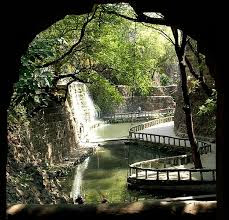 |
| Nek Chand Biography In Hindi |
What is the contribution of Nek Chand in the World of Art?
18 साल तक उन्होंने शहर और ग्रामीण इलाकों को बाइक से और चट्टानों और पत्थरों को खोजने के लिए, कूड़े के ढेर से पुनर्चक्रित कचरे, और 20 या इतने छोटे गांवों से मलबे को हटा दिया, जो नए शहर बनाने के लिए समतल किए गए थे। 1965 में उन्होंने बगीचे का निर्माण और अंतरिक्ष को व्यवस्थित करना शुरू किया। चूँकि यह सरकार द्वारा संरक्षित सार्वजनिक भूमि थी, जिसे सरकार द्वारा नो-बिल्डिंग ज़ोन के रूप में नामित किया गया था, Nek Chand ने अवैध रूप से, गुप्त रूप से काम किया।
Who is Nek Chand What is his achievement?
1972 में एक सरकारी अधिकारी ने परियोजना की खोज की, और, Nek Chand के बगीचे के लिए समर्थन के सार्वजनिक बहिष्कार के जवाब में - उस बिंदु पर 12 एकड़ (लगभग 5 हेक्टेयर) को कवर किया - सरकार ने इसे नष्ट नहीं किया। इसके बजाय, इसे सरकार की निगरानी में लाया गया था, और Nek Chand को इस परियोजना की देखरेख करने के लिए काम पर रखा गया था और 50 कर्मचारियों को इसके पूरा होने में सहायता करने के लिए दिया गया था। हालांकि 1976 में Rock Garden जनता के लिए खोल दिया गया था, Nek Chand और उनके कर्मचारियों ने Site का निर्माण और विस्तार कुछ 30 एकड़ (लगभग 12 हेक्टेयर) तक जारी रखा।
Why is Nek Chand famous in the World of landscape?
Nek Chand की मूर्तियों में से प्रत्येक - हजारों की संख्या में, जानवरों और मानव, दोनों को धातु के कवच के किसी रूप में, जैसे कि एक पुनर्नवीनीकरण साइकिल के फ्रेम के ऊपर कंक्रीट से बनाया गया था। इसके बाद आंकड़े मिट्टी के बर्तनों और चीनी मिट्टी के बरतन, कांच, बोतल के ढक्कन, या किसी अन्य प्रकार की छोड़ी गई सामग्री के साथ सजे थे, जो बनावट की पेशकश करते थे। वे कड़ी मुद्रा में खड़े हैं, और उनके चेहरे नकाबपोश हैं। Nek Chand ने बड़े करीने से व्यवस्थित समूहों में पूरे बगीचे में आकृतियाँ बनाईं, जिसके परिणामस्वरूप वे कुछ हद तक जमे हुए सेनाओं जैसे दिखते हैं। बगीचे में वास्तुशिल्प विशेषताएं भी शामिल हैं, जैसे कि Plaza, आंगन, मेहराब, आगंतुकों द्वारा उपयोग किए जाने वाले झूलों की एक बड़ी श्रृंखला और एक पत्थर का अखाड़ा। भूनिर्माण, रसीला और जटिल, झरने और बहने वाली धाराएं शामिल हैं।
Who was the Architect of Rock Garden?
Nek Chand और उसका बगीचा राष्ट्रीय खजाने बन गए। 1980 में उन्हें Paris City से Vermin के ग्रैंड मेडल से सम्मानित किया गया था, 1983 में बगीचे को Indian Dak Ticket पर चित्रित किया गया था, और एक साल बाद Nek Chand को भारत के Padma Shree Award (1984, भारत के सर्वोच्च नागरिक पुरस्कारों में से एक) के साथ प्रस्तुत किया गया था। Nek Chand को अन्य जगहों पर उद्यान बनाने के लिए भी नियुक्त किया गया था, विशेष रूप से Washington में National Children Museum में काल्पनिक गार्डन, D.C. (2004 में विघटित), और Europe और United States of America में प्रदर्शनियों का विषय बना रहा।
Guru Gobind Singh Ji Biography
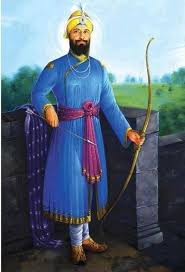 |
| Guru Gobind Singh Ji Saheb |
Guru Gobind Singh Ji Biography
The life of Mighty, Great Saint and Spiritual Guru- Guru Gobind Singh Ji is an immense source of inspiration for all of us. Guru Gobind Singh Ji's death anniversary is on 7 October 2020. Let us know about Guru Gobind Singh Ji's great life on this occasion and try to follow the path shown by him.
Brief Introduction
The original name of Guru Gobind Singh was Gobind Rai. Guru Gobind Singh Ji's birth place is said to be Patna, Bihar. Guru Gobind Singh Ji father's name was Guru Tegh Bahadur and mother's name was Gujri Devi. The first four years of Guru Gobind Singh Ji's childhood were spent in Patna. After that, Guru Gobind Singh Ji's family shifted to Punjab in the year 1670.
Nearly two years later, the family of Guru Gobind Singh resided in the Chalak Nanak (Anandpur Sahib) in the Shivalik Hills of the Himalayas. It was here that he learned primary education, language knowledge and martial arts. Growing up, Guru Gobind Singh Ji followed the footsteps of his father and protected Kashmiri Hindus from the Mughals ruler Aurangzeb. Guru Gobind Singh Ji fought in separate wars with the Mughals and their kingdoms for about 14 years. And lived a life in the works of human society till he lived.
Special Qualities of Guru Gobind Singh Ji Saheb
Sharing spiritual joy among the common people, teaching morality lessons to the people, encouraging and awakening the fearful and scared people to become fearless and mighty were the qualities of Guru Gobind Singh Ji. Guru Gobind Singh Ji was an idol of peace, forgiveness and tolerance. Guru Gobind Singh Ji had acquired knowledge of Sanskrit, Punjabi, Persian and Arabic languages. Many people believe that -
Guru Gobind Singh Ji was a unique confluence of devotion and power.
Guru Gobind Singh was also known as the blue horse. Since Guru Gobind Singh Ji had a blue horse. Guru Gobind Singh Ji was also a thinker and an excellent poet. Guru Gobind Singh Ji also had a special interest in music. It is said that Guru Gobind Singh Ji invented these instruments -
Family of Guru Gobind Singh
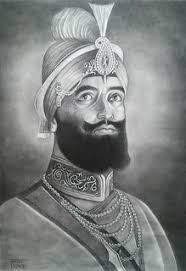 |
| Guru Gobind Singh Ji Saheb |
How did Gobind Singh become the tenth Guru of Sikhs?
Guru Tegh Bahadur Ji, Gobind Singh Ji's father was the ninth Guru of the Sikhs. When the Kashmiri Pandits were being forced to forcefully convert to Islam, Guru Tegh Bahadur Ji strongly opposed it and protected the Hindus. He himself refused to accept Islam. For this reason he was beheaded by the King of India Aurangzeb in the Chandni Chowk extension. After this incident his son Guru Gobind Singh was appointed as the tenth Guru of the Sikhs.
The word Khalsa means purity. Only a person committed to social service by mind, word and deed can call himself a Khalsapanthi. Guru Gobind Singh founded the Khalsa Panth in the year 1699. A Khalsa speech by him-
"Waheguru Ji Da Khalsa Waheguru Ji Di Fateh"
Was established and at the same time he established the basic principles of Khalsa Panth.
‘5 k’ or ‘5 kkkkk’ given by Guru Gobind Singh ji
1. Never cut your scalp.
2. Wearing a wood comb which is considered a symbol of cleanliness.
3. Wear hard in hand.
4. Wearing pajamas or knee-length underwear (briefs).
5. To keep the saber (short sword to protect the poor and mazaloom class).
It is said in a line -
Briefs, hair, saber, comb, bracelet
Chamkaur War - In 1704
One million soldiers of the Mughal imperial army faced Guru Gobind Singh with only forty Sikh fighter soldiers. In this fierce battle, Guru Gobind Singh Ji's two sons, Baba Jhujar Singh Ji and Baba Ajit Singh Ji were martyred. Apart from these, two more sons i.e. Fateh Singh and Zorawar Singh were later chosen by the enemies alive in the wall. His mother Mata Gujri Devi ji also died in the time period of this incident.
Other major battles:
1688 - Battle of Bhangani
1691 - Battle of Nandaun
1696 - Battle of Guler
1700 - First Battle of Anandpur Sahib
1701 - Battle of Anandpur Sahib
1702 - Battle of Nirmohgarh
1702 - Battle of Basoli
1704 - Battle of Anandpur
1704 - Battle of Sarsa
Final accompaniment of Guru Gobind Singh
At the last stage of Guru Gobind Singh Ji's life journey, Guru Gobind Singh called Sangat and told the Sikh religious book Guru Granth Sahib on the throne of the Sikh Guru. And said that now no more living person will sit on this throne.
In the coming times, the Sikh society has to seek guidance and inspiration from the book Guru Granth Sahib.
Along with this, Guru Gobind Singh Ji taught the Sikh society to help the oppressed and always conduct decently. In this way Guru Gobind Singh became the last living Guru of the Sikh society.
Death of Guru Gobind Singh
When Aurangzeb died, Bahadur Shah became the next king of India. Guru Gobind Singh also helped to get him the throne. For the same reason, their relationship was friendly. Stunned by the friendship of Bahadur Shah and Guru Gobind Singh, Nawab Wajid Khan of Sarhad had two Pathans who killed Guru Gobind Singh by deceit. Guru Gobind Singh breathed his last on 7 October 1708 at Nanded Sahib, Maharashtra. Guru Gobind Singh had a lifespan of 42 years. One of the two killers of Guru Gobind Singh himself was killed by his own dagger. And the other was killed by the Sikh group. Dagger's sharp blows on his heart led to his death.
special
Guru Gobind Singh compiled the teachings of all Sikh Gurus and mentioned them in the Guru Granth Sahib book and completed it. Guru Gobind Singh also started the tradition of adding the word Singh with the name of Sikhs. Guru Gobind Singh respected people of all religions and varnas and always helped them when needed. At the age of only nine, Gobind Singh inspired his father Guru Tegh Bahadur to protect and sacrifice Kashmiri Hindus.
Guru Tegh Bahadur Ji-Ninth Guru of Sikhs
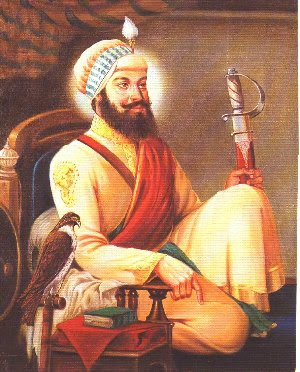 |
| Guru Tegh Bahadur Ji-Ninth Guru of Sikhs |
Guru Tegh Bahadur Ji-Ninth Guru of Sikhs
Guru Tegh Bahadur Singh was a revolutionary era man. He was born Vaisakh Krishna Panchami in Amritsar, Punjab. Guru Tegh Bahadur Sahib's place in world history is unique among those who sacrificed their lives to protect religion and human values, ideals and principles.
At the same time, he learned Gurbani, scriptures as well as weapons and horse riding. Guru Tegh Bahadur Ji was became Guru due to the premature death of Harkrishan Rai Ji (8th Guru of Sikhs).
At the age of just 14, he showed his valor in the war against his father against the attack of the Mughals. Impressed by this heroism, his father named him Tegh Bahadur i.e. the Sword of the Rich.
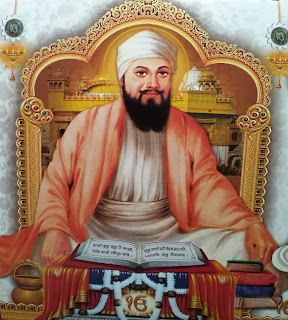 |
| Guru Tegh Bahadur Ji-Ninth Guru of Sikhs |
Peoples got inspired by Guru Tegh Bahadur Singh wherever he went on various places, people not only gave up drug addiction, but also gave up tobacco farming. They liberated the country from the clutches of the wicked with a spirit of protest, prepared for the sacrifices and sacrificed the nefarious intentions of the Mughals.
Of the 15 ragas of Baani composed by Guru Tegh Bahadur Singh Ji, 116 Shabads (including shlokas) are compiled in the Sri Guru Granth Sahib. The ninth Sikh Guru Tegh Bahadur Singh sacrificed to crush the brutal and anti-human policies of the ruling class of his era. Only the person who has attained the 'ultimate in self' can reach the peak of humanity.
Guru Tegh Bahadar Singh sacrificed his all for the protection of religion and religious freedom and in the true sense called 'Chadar of Hind'. Guru Tegh Bahadur Singh possessed human qualities like equality, compassion, love, sympathy, sacrifice and sacrifice along with divine allegiance.
Such a combination of arms and scripture, struggle and disinterest, temporal and supernatural, strategy and ethics, politics and diplomacy, collection and renunciation etc. is rare in medieval literature and history.
Also Read
Guru Nanak Dev Ji 1st Guru Of Sikhs.
Guru Angad Dev Ji 2nd Guru Of Sikhs.
Guru Amar Dass Ji 3rd Guru Of Sikhs.
Guru Ram Dass Ji 4th Guru Of Sikhs.
Guru Arjan Dev Ji 5th Guru Of Sikhs.
Guru Hargibind Sahib Ji 6th Guru Of Sikhs.
Guru Har Rai Ji 7th Guru Of Sikhs.
Guru HarKrishan Dev Ji 8th Guru Of Sikhs.
Sri HarKrishan Sahib Ji Biography
 |
| Gurudwara Sri Bangla Sahib Ji |
ਸ੍ਰੀ ਹਰਿਕ੍ਰਿਸ਼ਨ ਧਿਆਈਐ ਜਿਸ ਡਿਠੇ ਸਭਿ ਦੁਖ ਜਾਇ ॥
ਸ੍ਰੀ ਹਰਿਕ੍ਰਿਸ਼ਨ ਧਿਆਈਐ ਜਿਸ ਡਿਠੇ ਸਭਿ ਦੁਖ ਜਾਇ ॥
ਸ੍ਰੀ ਹਰਿਕ੍ਰਿਸ਼ਨ ਧਿਆਈਐ ਜਿਸ ਡਿਠੇ ਸਭਿ ਦੁਖ ਜਾਇ ॥
When Guru Harkrishan Ji reached at Delhi, Guru Sahib preached to Raja Mirza Jai Singh's queen. At a young age, sitting on the gurugaddi, he conveyed the message of such fearlessness and courage that Emperor Aurangzeb longed for darshans, but Guru Sahib refused,
The plague spread everywhere, the laps of many mothers became numb, death began to fill its lap then Satguru Ji cremated the corpses without any discrimination. He also distributed medicines to alleviate the sufferings of the patients. When the disease was brought under control, . Guru Sahib took pains on his head and settled in the houses of those who were destitute due to death. At last Guru Har Krishan Ji, who had been doing great deeds for a long time, approached the end of time
That is,
before he passed away, he appointed Guru Tegh Bahadur Sahib Ji his Granduncle as the ninth Guru.
Guru Har Rai The 7th Guru of the Sikhs
 |
| Guru Har Rai The 7th Guru of the Sikhs |
Guru Har Rai the 7th Guru of the Sikhs
Who was the father of Guru Har Rai Ji
Guru Har Rai, also known as Har Rai, was the 7th Guru of the Sikhs. Apart from being a spiritual and nationalist saint, he was also a warrior. He was born in Punjab. He was married to Kishan Kaur Ji.
Also Read Guru Nanak Dev Ji
What did Guru Har Rai teach ?
His two sons were Guru Ramarai Ji and Harkishan Sahib Ji. Guru Har Rai helped the rebellion of Dara Shikoh, brother of the Mughal ruler Aurangzeb. Guru Har Rai died in 1661 AD.
Who is the Seventh Sikh Guru
Also Read Guru Angad Dev Ji
Hargobind Sahib, the 6th Guru of the Sikhs, had declared his grandson Har Rai ji as 'Saptam Nanak' at the young age of 14, before his death.
Also Read Guru Amar Dass Ji
Actually Guru Hargobind Singh had three marriages. From whom a daughter and five sons were born. The eldest son's name was Guru Ditta. Once Guru Hargobind Singh went to the ashram of
Udasi Sant Srichandra.
Also Read Guru Ram Dass Ji
Mahatma Srichandra demanded Guru Ditta from him. And he was declared the successor of his throne after him. Har Rai mother's name was Nihal Kaur, wife of Baba Guru Ditta.
Also Read Guru Arjan Dev Ji
When Guru Hargobind realized that his last time was nearing, he handed over the throne to his grandson. At that time Guru Har Rai was very young.
Also Read Guru Hargobind Sahib Ji
Who are the ten Gurus In order
Guru Hargobind Sahib Ji - the sixth Guru of the Sikhs
 |
| Shri Guru Hargobind Sahib Ji |
Guru Hargobind was the sixth Guru of the Sikhs
Guru Hargobind Sahib Sakhi in Punjabi
Guru Hargobind Singh started the Arms tradition in Sikhism
Also Read Guru Nanak Dev Ji
Guru Hargobind ji was the sixth Guru of the Sikhs. He attained the Guru Gaddi at the age of eleven after the martyrdom of his father Guru Arjan Dev in Lahore. As a child, Guru Hargobind Sahib was educated and supervised by Baba Budha Ji. He was also taught martial arts with knowledge of religious scriptures. He was a master of very influential personality. At the time of occupation of the Gurugaddi, he decorated the beautiful costumes of the Guru Ghar in place of the traditional costumes and wore two swords. He said that one of his swords is a symbol of religion and the other is power. In this way he introduced the concept of Miri and Piri.
Also Read Guru Angad Dev Ji
Guru Hargobind Ji Birthday 2020 5th July 2020
Guru Hargobind nagar Ludhiana
Also Read Guru Amar Dass Ji
Weapon of war
The purpose of wearing their weapons was to protect them from injustice. Guru Hargobind ji also prepared an army of Sikhs in which he selected and recruited warriors. Guru Hargobind Ji composed Shri Akal Takht Sahib right in front of the entrance of Shri Harmandir Sahib in Amritsar to reveal the supremacy of the power of God. This meant that God is the greatest king and earthly powers are immaterial. Guru ji used to listen to Guruvani in Shri Harmandir Sahib in the morning. Would join Nitnem. Later in the afternoon, while sitting on the Akal Takht and discussing with the Sadh Sangat, he used to guide them.
Also Read Guru Ram Dass Ji
Guru Hargobind Sahib Ji Parkash Purab 2020 5th July 2020
Guru Hargobind Sahib Ji released the hundred captive kings from Jahangir
Also Read Guru Arjan Dev Ji
Guru Hargobind Sahib Ji Height was about 7'6"
Guru Arjan Dev Ji Biography
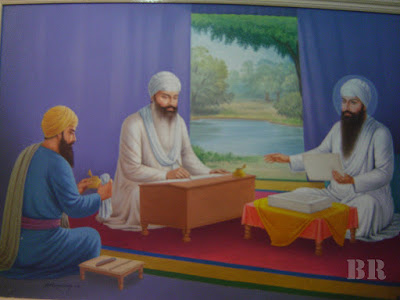 |
| Guru Arjan Dev Ji |
Sri Guru Arjan Dev Ji Biography and History
Guru Arjan Dev Ji was the fifth Guru of the Sikhs. He used to preach all religions. He preached to uphold human ideals. Sri Guru Arjan Dev Ji was a great soul.
Seeing the qualities of religious and human values, serene instincts, warm-hardheartedness, dutifulness within him, his father Sri Guru Ramdas ji in 1581 embellished Sri Guru Arjun Dev Ji on the "Guru Gaddi" as the fifth Sikh Guru.
Sri Guru Arjan Dev Ji Biography ! Sri Guru Arjan Dev Ji Biography
Also Read Guru Nanak Dev Ji Biography
Guru Arjan Dev ji Received Guru Gaddi
Also Read Guru Angad Dev Ji
Marriage
Also Read Guru Amar Dass Ji
The reason for martyrdom of Guru Arjan Dev Ji
Also Read Guru Ram Dass Ji
Renounce body by Guru Arjan Dev Ji
Guru Arjan Dev ji passed away
Guru Arjan dev Ji shaheedi gurupurab 2020 26 May2020
Guru Arjan dev Ji gurupurab 2020 26 May2020
Guru Arjan Dev Ji shaheedi
Bani (preaching) recorded in Guru Granth Sahib
Guru Arjan Dev Ji University It is located in Ludhiana
Guru Arjan Dev Nagar Ludhiana
Emperor Akbar and Guru Arjan Dev Ji
Guru Ramdas Ji Biography In HIndi 4th Guru of Sikhs
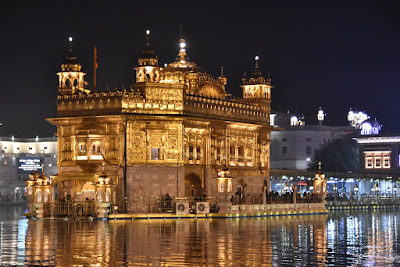 |
| Golden Temple Amritsar |
Guru Ram Das Ji Biography In Hindi
Childhood & Early Life
Later Life
Major Works
Personal Life & Legacy
Also Read Guru Nanak Dev Ji
Guru Angad Dev Ji
Guru Amar Das Ji
Shinzo Abe Biography - Biography of Shinzo Abe
Shinzo Abe Shinzo Abe Biography - Biography of Shinzo Abe Shinzo Abe is a Japanese politician serving as the 57th Prime Minister of Japan ...
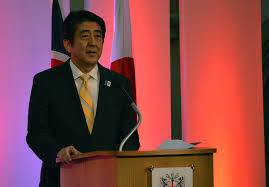
-
Chandrashekhar Azad Biography Chandrashekhar Azad Biography Born: 23 July 1906 Died: 27 February 1931 Achieve...
-
Bipin chandra Pal Name: Bipin chandra Ram Chandra Pal. Born: 7 November 1858. Father: Ramachandra. Mother: Narayanidevi. Marriage: Remarriag...
-
Adi Burjorji Godrej Biography of Aadi Burjorji Godrej,Aadi Burjorji Godrej Biography Adi Burjorji Godrej Biography - Biography of Adi Burjo...


